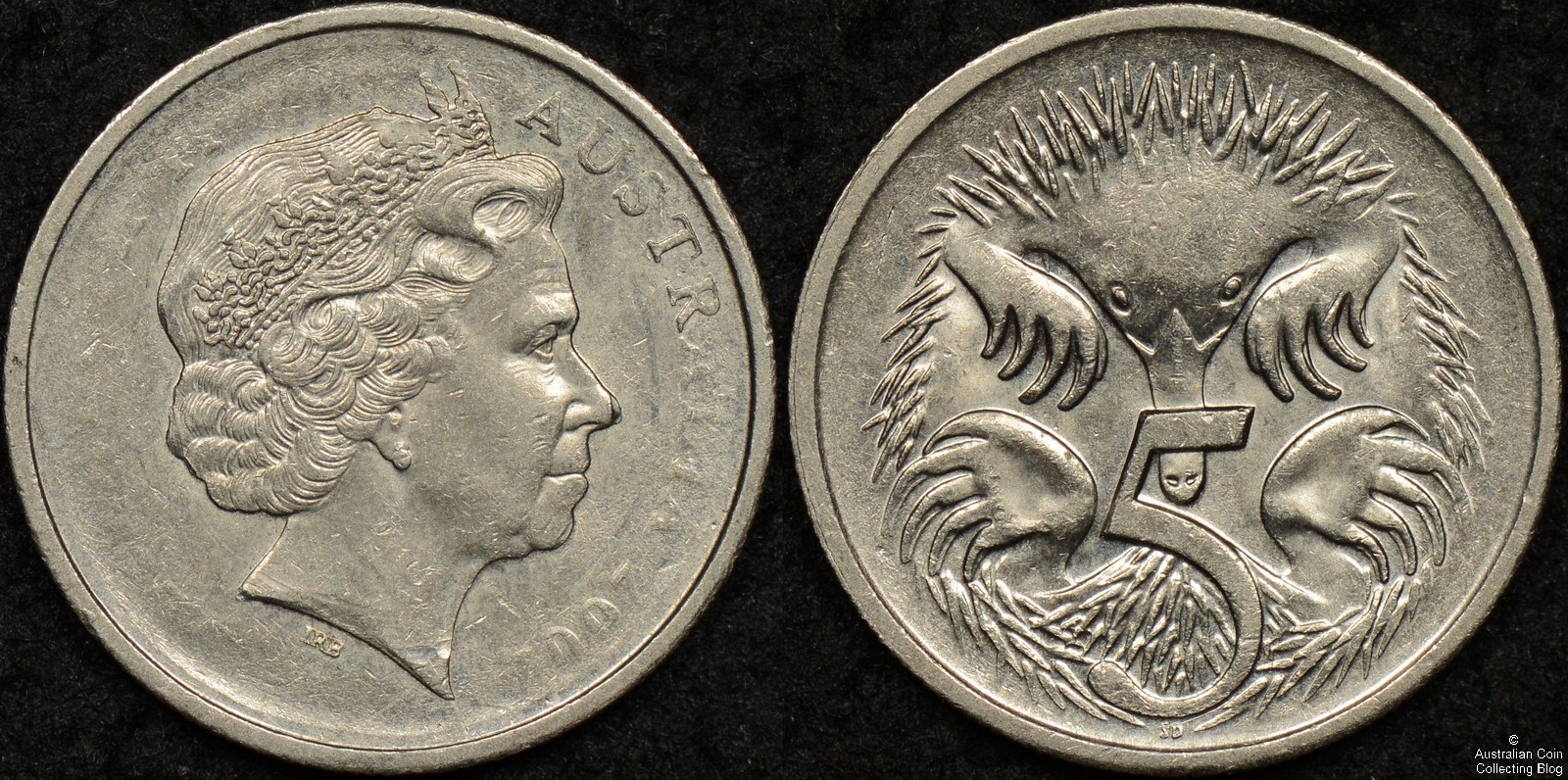Today’s spotlight is an example of the type of error seen quite often on circulating coins although not usually seen to the extent that we see on the example pictured. Shown here is a 2002 5c with the obverse weakly struck around the legends and the reverse a normal strike. The coin is the correct weight of 2.85g so there is no planchet metal missing, if there was metal missing we would conclude that this error was something other than what it actually is. The obverse strike weakness is caused by an excess of oil or grease on the die surface when the coin was struck that obscures the details in the design. It’s likely the press operator wiped the die with an oily rag and it left oil in the legends and some of the tiara and hair detail.
This error is called a strike though or struck through or struck through oil error. A strike through means something was between the die and the planchet when the coin was struck and there are a number of things that a coin can be “struck through” including cotton from a rag, wire, a piece of planchet and in this case oil or grease from the maintenance process.
This coin appears to have a reasonably uniform amount of strike weakness around the legends which could indicate it was struck with a lower than optimal striking pressure. So why have we not concluded this coin is a weak strike or die adjustment strike error? There are 2 tell-tale signs this is not the case.
1. If it was then both sides of the coin would be affected in the same way (which they are not), there is no strike weakness or design missing from the reverse.
2. While the oil affects the obverse legends it isn’t uniform around the whole coin with AUSTR only minimally affected by the oil and ELIZABET is unrecognisable where the oil was the heaviest.
Grading to Extremely Fine this coin has likely been pulled from circulation quite early on and put aside by an eagle eyed collector.


